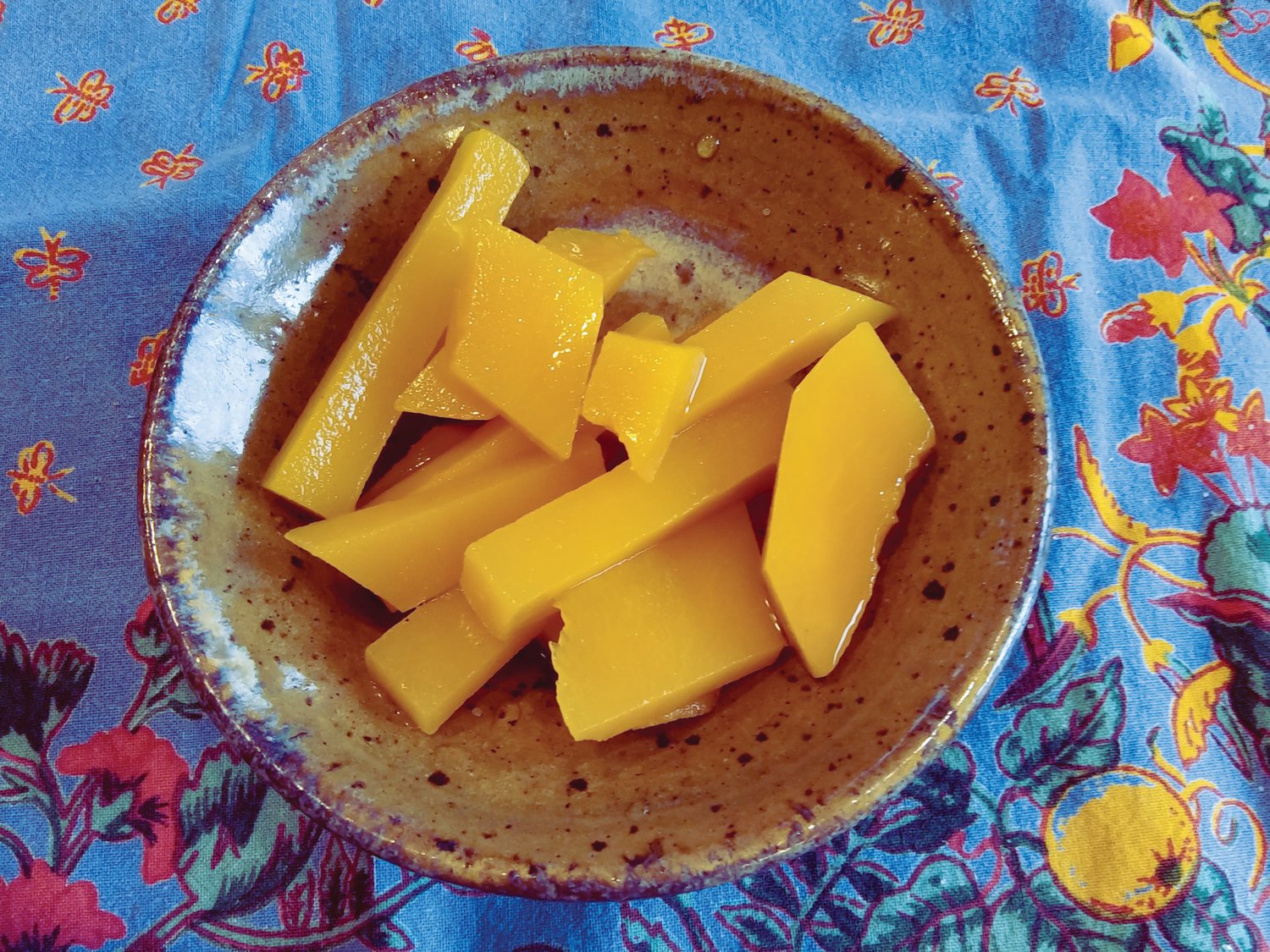In my comfy rocker, with a stack of classic Thanksgiving issues of “Saveur” and “Gourmet.” I flipped through glossy pages of perfect pies, when a memory of my 10 fingers …
This item is available in full to subscribers.
We have recently launched a new and improved website. To continue reading, you will need to either log into your subscriber account, or purchase a new subscription.
If you had an active account on our previous website, then you have an account here. Simply reset your password to regain access to your account.
If you did not have an account on our previous website, but are a current print subscriber, click here to set up your website account.
Otherwise, click here to view your options for subscribing.
* Having trouble? Call our circulation department at 360-385-2900, or email our support.
Please log in to continue |
|

In my comfy rocker, with a stack of classic Thanksgiving issues of “Saveur” and “Gourmet.” I flipped through glossy pages of perfect pies, when a memory of my 10 fingers adorned with black olives surfaced. I saw a partitioned pressed glass dish filled with sweet pickles, canned beets, celery stuffed with cream cheese, and black olives.
What was that called?
The relish tray. Once an integral part of the Thanksgiving ritual, and now forgotten, or at least misunderstood. As a child, I knew those olives were the only thing of interest. I wouldn’t touch the beets — total yuk — and the rest looked boring. So, why conjure up the relish tray?
Got me, but curiosity won, and that meant reading articles, tracking down vintage relish trays, and watching YouTube videos. Yes, cavelcadeoffood.com devoted an entire episode to celebrate the relish tray, both as an example of historic American tableware and the foods served in them.
The search was adventurous and created more questions and thoughts like...
“A term flexibly applied to pickles, small fish variously preserved, and other dishes intended to stimulate appetite.” The Encyclopedia Of Food by Artemas Ward 1923.
“A vegetable side dish eaten in small quantities with a blander main dish. Relishes are frequently finely cut vegetables in a sour, sweet-sour, or spicy sauce… The Indonesian sambal, Indian chutney, and Korean kimchi are relishes that accompany virtually every meal in their respective cuisine.” Encyclopedia Britannica
First, the sour taste fuels the appetite by increasing salivary secretions, digestive enzymes, and stimulating our metabolism. Second, sour foods aren’t calorie laden, so won’t spoil your dinner, unlike items on a cheese board.
My takeaway from this romp with the relish tray is to serve pickles, marinated olives, and crudites before a meal to stimulate the appetite. Save the hors d’oeuvre for casual gatherings as meals in themselves. Think of Spanish tapas, Mediterranean mezze, and Eastern European zakuski. They support social gatherings and drinking, not dinners. When you keep this rule in mind, it simplifies pre-dinner expectations.
Classic American relish trays from the 1930s through the 1970s, often made of pressed glass, came in all shapes, colors, and sizes. They were always partitioned, to keep the various pickle juices separate, because it’s important to keep sweet pickle and spicy olive flavors from mixing.
If I were queen of the relish tray, I’d make it a conversation piece to promote and educate its comeback, by using vintage relish trays, augmented with pint mason jars for upright raw veggies. Vary the colors of the raw veggies, pickles and olives—black, green, red, yellow, and greens. Use lots of fresh herbs under and around the trays. Be sure to include spicy, sour-sweet, and umami offerings.
Be daring — make a variety of quick pickles for the occasion with unusual vegetables.
Bring out the exciting lacto-fermented and canned pickles put up over the summer. It’s the time to show off family recipes. How about some homemade pickled peppers, horseradish sauce, spicy kimchi, sweet and sour beets — or pickled and smoked fish? Say yes, this year to the return of the relish tray.
Makes 1 quart
4 cups butternut squash, peeled and cut into ¼ inch sticks
1 cup raw apple cider vinegar
6 tablespoons honey
½ cup water
2 ½ teaspoons fine grained seasalt
3 cloves garlic, minced
1 tablespoon fresh ginger, minced
½ teaspoon cayenne pepper
1 tablespoon fennel seed
½ teaspoon decorticated cardamom
1 teaspoon ground cinnamon
1 teaspoon ground turmeric
Peel, seed, and chop butternut squash into French-fry sized sticks. Don’t fuss over the curved pieces and chop into irregular pieces. Bring a pot of water to boil, salt and blanch the squash for 1 minute, or until still crunchy — not starchy. Strain and submerge in cold water. Drain and add to a quart mason jar.
In a saucepan, bring the vinegar and other brine ingredients to a simmer for 15 minutes. Cool, pour the brine over the squash, seal with a non reactive lid, and refrigerate overnight before serving.
(Sidonie Maroon is culinary educator at The Food Co-op; abluedotkitchen.com. Find additional relish tray inspirations on THE BEET, the Food Co-op blog, at foodcoop.coop/blog.)